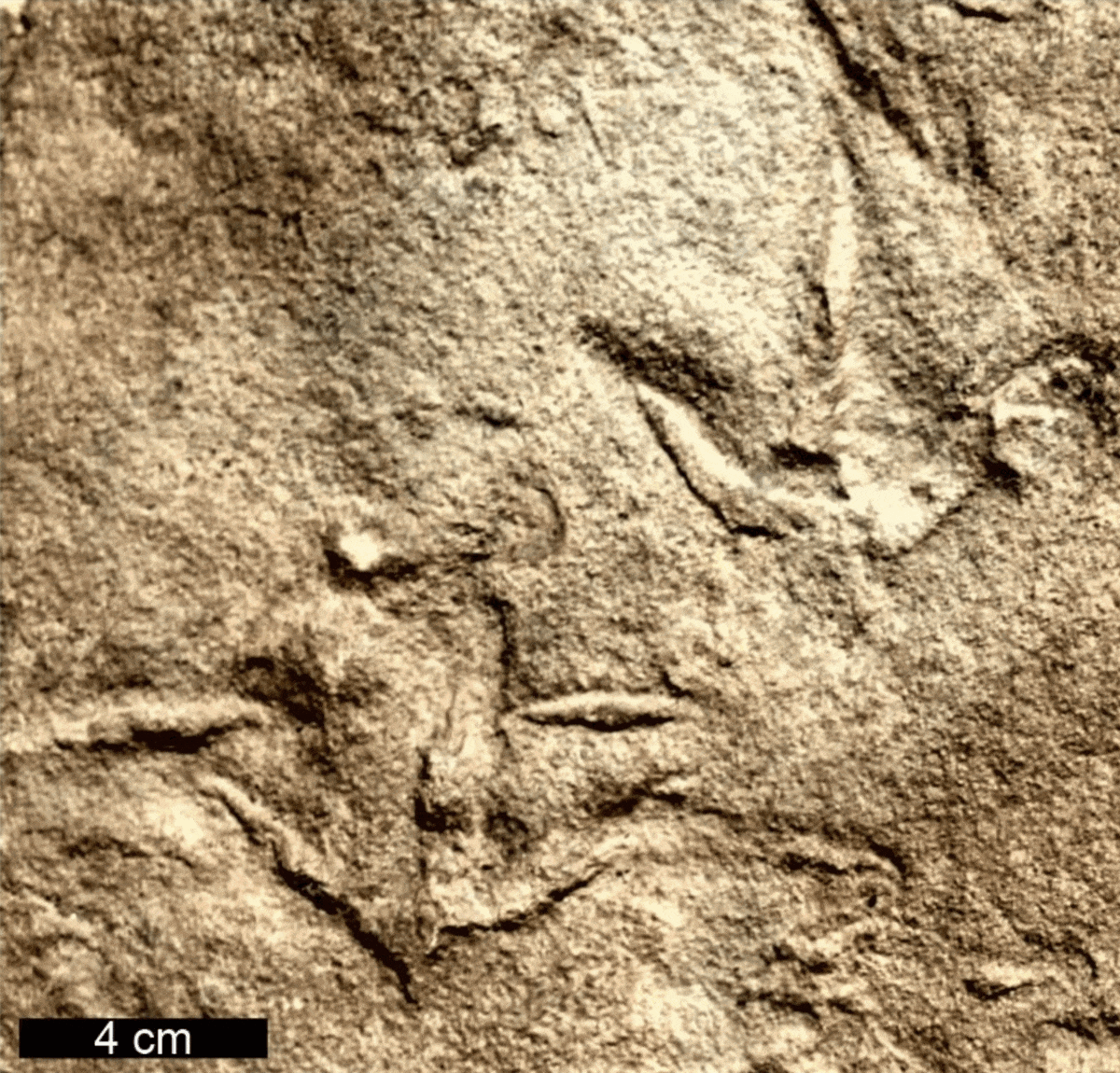Fossils
Uncovering the Secrets of Colombia's Rich Fossil Deposits
Paleontologists are working hard to understand oceanic remains buried high in the Andes
Rare Fossil Shows Trees Looked Very Different 350 Million Years Ago
The newly discovered specimen looks like something from the imagination of Dr. Seuss, and it sheds light on a little-understood era of prehistory
Stone Age People Used This 35,000-Year-Old Woolly Mammoth Tusk Tool to Make Rope, Scientists Say
To test their hypothesis that the perforated object was a tool, researchers used a replica to create a 16-foot-long rope from cattail reeds
Newly Discovered, Parrot-Like Dinosaur Roamed North America Alongside T. Rex
While larger dinosaurs are comparatively well-known, finding smaller species paints a more complete picture of life before the mass extinction
Was Megalodon Slimmer Than Previously Thought?
A new study has spurred scientists to debate the shape of prehistory’s biggest shark
The Most Anticipated Museum Openings of 2024
Scheduled to launch this year are new institutions dedicated to astronomy, Nintendo and women artists
Meet Elma, a Woolly Mammoth Who Roamed Far and Wide More Than 14,000 Years Ago
By analyzing a fossilized tusk, scientists have pieced together the animal's movements
Fossils Reveal a Possible New Tyrannosaur Species, the Closest Relative of T. Rex
The remains, dug up in the 1980s, might shed light on T. rex's mysterious origins, according to a new paper
Miners Discover Seven-Foot Mammoth Tusk in North Dakota
After coal mine workers found the 50-pound specimen, paleontologists studied the site and uncovered more than 20 additional bones
This 288-Million-Year-Old Fossilized Scrap of Skin Is the World's Oldest
The remains, found in an Oklahoma cave, belonged to a lizard-like reptile
Early Primates May Have Feasted on Soft, Sweet Fruits
An analysis of more than 400 fossilized teeth suggests the creatures weren't eating many seeds, nuts or other hard foods
Scientists Uncover the Earliest Fossil Evidence of Photosynthesis
Ancient cyanobacteria contained structures for producing oxygen around 1.75 billion years ago, according to a new study
Decades-Long Debate on 'Teenage' Tyrannosaur Fossils Takes Another Turn
A new paper adds to evidence suggesting a group of disputed fossils, identified by many scientists as young T. rex, are actually another species
Thirteen Discoveries Made About Human Evolution in 2023
Smithsonian paleoanthropologists reveal some of the year’s most fascinating findings about human origins
Fossil Hunters Uncover Prehistoric 'Sea Monster' Skull at a U.K. Beach
The six-and-a-half-foot-long pliosaur skull was excavated from a rock cliff in England and may belong to a new species, scientists say
The Top Ten Dinosaur Discoveries of 2023
From uncovering a tyrannosaur’s last meal to unlocking the secrets of a dino with a really long neck, these were the year’s biggest stories
Once Thought to Be Plants, These Rare Fossils Are Actually Baby Turtles, Scientists Say
The prehistoric specimens found in Colombia could represent one of the oldest and largest turtle species to ever exist
Amazing Fossil Preserves Teenage Tyrannosaur’s Last Meal
Stomach contents from a juvenile Gorgosaurus reveal it feasted on small, bird-like species 75 million years ago
Male Mosquitoes May Have Once Sucked Blood, Amber Fossils Suggest
Today, only female mosquitoes feed on the blood of animals, while males are satisfied with plant juices
Mysterious Creatures With Bird-Like Feet Made These Tracks Long Before Birds Evolved
The footprints pre-date the earliest known fossils of avian ancestors by roughly 60 million years, per a new study
Page 2 of 51
:focal(800x602:801x603)/https://tf-cmsv2-smithsonianmag-media.s3.amazonaws.com/filer_public/c1/1c/c11c3e9f-d10f-45df-88e6-c835679a245e/header-uncropped-colombia-cretaceous-fossils_web.jpg)
:focal(1050x750:1051x751)/https://tf-cmsv2-smithsonianmag-media.s3.amazonaws.com/filer_public/83/bc/83bc45d1-1ee5-41e6-87a6-a02ed8dfd0f1/ancienttree1.jpg)
:focal(489x335:490x336)/https://tf-cmsv2-smithsonianmag-media.s3.amazonaws.com/filer_public/f5/0a/f50a2b28-d50e-4729-a5be-d5b250f6f39d/woolymammoth2.png)
:focal(800x602:801x603)/https://tf-cmsv2-smithsonianmag-media.s3.amazonaws.com/filer_public/a1/d6/a1d69c53-4367-4a5f-8a36-4e7650a73a16/journalpone0294901g010_web.jpg)
:focal(749x564:750x565)/https://tf-cmsv2-smithsonianmag-media.s3.amazonaws.com/filer_public/87/29/87290ba6-1553-4957-8822-a6a59657f5be/gettyimages-567419617_web.jpg)
:focal(2969x1810:2970x1811)/https://tf-cmsv2-smithsonianmag-media.s3.amazonaws.com/filer_public/5e/97/5e97f9fc-24b5-4acf-b7fd-bc5078043b4d/1c1a07e3-5a0e-4b94-b0c0-eaae64150c83.jpg)
:focal(512x341:513x342)/https://tf-cmsv2-smithsonianmag-media.s3.amazonaws.com/filer_public/d7/93/d7937ea8-25b4-42d5-976b-57dc156d80bc/karen-spaleta-sampling-swanpoint-mammoth-tusk-1-1024x682.jpg)
:focal(1181x844:1182x845)/https://tf-cmsv2-smithsonianmag-media.s3.amazonaws.com/filer_public/c9/6f/c96f8ae8-3fe2-4465-ba50-88984e639f5a/new-dinosaur-species-m.jpg)
:focal(960x722:961x723)/https://tf-cmsv2-smithsonianmag-media.s3.amazonaws.com/filer_public/54/ce/54cea99b-456a-4de7-9cee-3d30837d6722/fmm_6-8-2023_05.jpeg)
:focal(800x602:801x603)/https://tf-cmsv2-smithsonianmag-media.s3.amazonaws.com/filer_public/a1/30/a130b8ef-033f-4a49-8780-341693394317/fossilized-skin_credit-current-biology-mooney-et-al.jpg)
:focal(700x527:701x528)/https://tf-cmsv2-smithsonianmag-media.s3.amazonaws.com/filer_public/dc/de/dcde6ff1-e24d-4685-9dff-1368b7a66262/untitled_design.jpg)
:focal(2000x1333:2001x1334)/https://tf-cmsv2-smithsonianmag-media.s3.amazonaws.com/filer_public/95/7b/957bb0c1-b214-4140-8727-11b20fe2cffd/gettyimages-1242412688.jpg)
:focal(350x230:351x231)/https://tf-cmsv2-smithsonianmag-media.s3.amazonaws.com/filer_public/fd/0b/fd0b31c6-07df-4c2b-b236-0bf9409effe2/low-res_nanotyrannus_versus_baby_t_rex_reduced.jpg)
:focal(2603x1735:2604x1736)/https://tf-cmsv2-smithsonianmag-media.s3.amazonaws.com/filer_public/78/56/78561392-632d-43a8-87a4-a0784440ca05/paleoart-santaelina-prsb-jo.jpg)
:focal(1011x674:1012x675)/https://tf-cmsv2-smithsonianmag-media.s3.amazonaws.com/filer_public/ab/26/ab26ff66-bbe3-4841-b014-02e1ae4ad621/00xp-pliosaur1-superjumbo.webp)
:focal(800x602:801x603)/https://tf-cmsv2-smithsonianmag-media.s3.amazonaws.com/filer_public/8b/0e/8b0ef95c-1c54-4edf-a049-1729608d5f2c/topdinos2023-v2.jpg)
:focal(502x325:503x326)/https://tf-cmsv2-smithsonianmag-media.s3.amazonaws.com/filer_public/84/a3/84a34abe-ef48-4370-82bc-d6752b1342ce/ezgif-1-73be12d57b.png)
:focal(709x533:710x534)/https://tf-cmsv2-smithsonianmag-media.s3.amazonaws.com/filer_public/c3/42/c342a24b-02a4-47b5-be7d-0b14dfc10ab8/16-gorgosaurus-consumption-artist-julius-csotonyi-copyright-royal-tyrrell-museum-of-palaeontology_web.jpg)
:focal(2750x1781:2751x1782)/https://tf-cmsv2-smithsonianmag-media.s3.amazonaws.com/filer_public/4b/2b/4b2b929b-94dc-45f7-add4-c6373db676f8/gettyimages-540806304.jpg)
